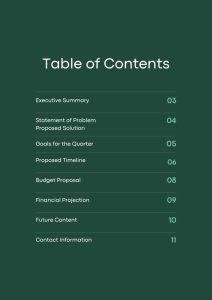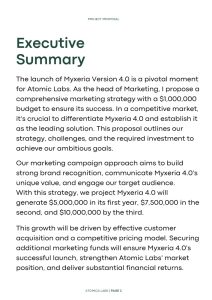So, you’ve got a killer business model, top-notch products and services, and desire to get your business out there and win over clients, what you need is a compelling business proposal.
A strong business proposal can move the needle from losing a potential client to landing one. With a clear plan, you can write a strong business proposal that catches your potential client’s eyes and pushes their pen to close the deal.
But what is a business proposal, and how can you write one compelling enough to win that business deal or get funding? Let’s get right into it!
What is a Business Proposal?
A business proposal is a formal document prepared by an organization and sent to a potential client to win a business deal.
In other words, it’s that document you send to a potential client to pitch what you’re offering—either your product or service. This is your moment to convince them why and how choosing your business is the best decision for them to make.
Imagine telling a story but in a more professional way, in which your company and what you offer become the hero who arrives to save the day.
It’s a common mistake that a business proposal, business plan, and investor pitch deck are the same but not the same. So, a proposal helps you pitch and sell your product or service — not your business.
Think about it as a proposal that helps you attract new customers or clients instead of searching for investors to fund your business.
Critical Components of a Business Proposal
Although the format of business proposals can vary, to craft a strong business proposal and make it compelling enough to convince your prospect to take action, it should all contain the following essential elements:
- Title page
- Table of contents
- An executive summary that explains your company’s why
- Problem statement
- Proposed solution
- Your qualifications and experience
- An estimated timeline
- Pricing and billing
- Legal Information
- Terms and conditions
- An acceptance section where your potential client can sign the document.
How to Write a Business Proposal
Whether you’re a start-up or not, knowing how to draft a business proposal is essential for gaining new customers or clients.
Even though it may seem complicated, creating a solid business proposal may be relatively simple if you follow the appropriate steps and have the right mindset. Here is a simple step-by-step guide;
-
Research the client to understand them better
Take the time to learn about your client’s business, industry, and particular requirements before you even consider writing. This groundwork will help you write your business proposal that is more suited to their unique challenges.
-
Use a business proposal template
Starting with an existing business proposal template can be a total game-changer. A quality business proposal template includes all the critical components while ensuring your writing is presented in an expert, well-organized manner. It also helps you focus on tailoring the material to your client’s demands and saves time.
-
Add a title page and table of contents page
Start with the title page, which includes the title of your proposal, your company’s name, the recipient’s name, and the submission date. The next page should be a table of contents for smooth navigation, especially in a more extended business proposal.

-
Write a compelling executive summary
The executive summary serves as the introduction to your business proposal and is your opportunity to establish a good impression. Be sure it is concise, engaging, and client-focused. Emphasize your proposal’s key points and how your solution would benefit the client.
A practical executive summary will;
- Introduce your business (more so in the case of an unsolicited proposal).
- Include a summary of what your business goals are.
- Give an overview of one or two prior projects related to your skills.
- Point out your key selling points in brief.
- Outline your company’s plans for growth and highlight significant achievements.
- Show how your proposal is the starting point in the right direction.

-
State the problem and proposed solution
This forms the core of your proposed business. Clearly state the problem you are trying to solve, how it will satisfy your client’s needs, and why it is the best option. Avoid head-scratching grams; just keep it clear and concise.
Always remember that you are providing a solution to the client, so be sure to explain how your approach will improve their quality of life or business.


Read also: Business Communication in Formal Settings.
-
List the budgets, deliverables, and milestones
Once you have outlined the project’s specifics, list the deliverables this proposal will achieve. For instance, if you want to propose a business expansion—a new branch in a new location, specify every step that must be taken, the budget, and the timeline.
Meanwhile, milestones include goals and specified stages and checkpoints for your project. Milestones are a component of the project’s overall picture instead of deadlines, which may indicate specific, minor activities.
Milestones are also essential to budgeting since they demonstrate the progress of a project and indicate whether further milestones need to be reevaluated. Since deliverables are the end product of reaching a milestone, changing the budget or milestones may also affect deliverables.
Additionally, aim for extra professionalism and accuracy in this section, as it can make or break your business proposal. Showing you’ve done your homework in this section reflects your seriousness about your request. Also, providing prior accomplishments can be a confidence booster to the client that you came to win.

-
Write the conclusion
You want to leave the prospect with a great, lasting impression of you at the end of your proposal. For a surefire finish:
- Briefly recap your proposal’s key points.
- Emphasize what sets you apart and the benefits of your products.
- Reiterate how moving forward with you will benefit them by implementing your business proposal.
- Convey a sense of urgency and indicate what needs to be done next, such as contacting your sales rep or filling out a contact form—all in a compelling call to action (CTA).

-
Conclude with solid terms and conditions
Every business proposal should include terms and conditions to protect you and the client. This section should address confidentiality agreements, payment terms, and any other legal issues related to the project.
To ensure this section is complete and clear, having a legal expert evaluate it is a good idea. And lastly, add your contact info page so they know how to contact you.
Types of Business Proposals
There are two types of business proposals:
- Unsolicited business proposals: These are proposals that you send to prospective clients or customers in order to get into business with them, even if they haven’t asked for one.
- Solicited business proposal: Meanwhile, solicited business proposals are those sent to potential customers so they can decide to embark on the business journey with you.
Additionally, there are also official and informal proposals. Informal proposals are usually used with existing clients or in a more laid-back corporate environment. They are also typically shorter.
On the other hand, formal proposals are longer, more in-depth, and used in cases that call for well-detailed analysis and presentation—typically for new clients or massive projects.
Read also: Grant Format: A Guide to Writing a Grant Proposal for Small Business Owners.
Tips for Crafting a Winning Business Proposal
- Have a client-centered approach. Prioritize the needs of the client and how your solution will help them.
- Keep it clear and concise. Leave out any unnecessary fluff. Be direct and make your message clear.
- Add clear, catchy visuals related to your business proposal, including photographs, graphs, and charts.
- Review your work again, typos and poor grammar might reflect poorly on you. Before sending a proposal, be sure it is proofread.
How to Find the Perfect Business Proposal Template
Choosing the best business proposal template online can seem daunting because there are so many of them. Seek out templates for business proposals that are comprehensive, adaptable to your industry, and have all the components you need.
Make your proposal look clean and professional by using the suitable template, which will also speed up the writing process.
Read also: Crafting a Winning Business Pitch.
Wrapping it Up
Yes, writing an effective business proposal could feel overwhelming, but with these guide given to you—it’s a done deal! You can also use comprehensive business proposal samples as a guide.
Finally, know that this is your opportunity to convince prospective clients that you are the top pick—write intentionally to leave a great impression that could potentially lead to a handshake.
So, take a deep breath, write on, and let your experience and accomplishments shine!
“If you enjoyed this article, kindly follow us on LinkedIn or Twitter for more content like this. You can contact us directly on WhatsApp to spotlight your business to the right audience.”
